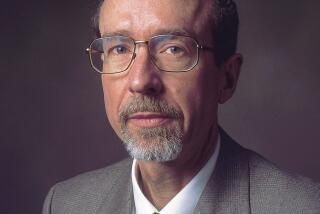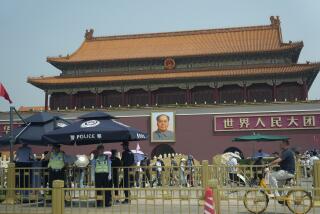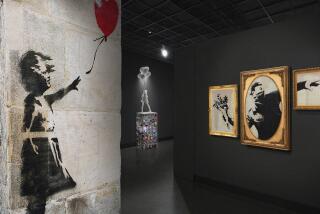Tiananmen Square mystery: Who was ‘Tank Man’?
- Share via
Reporting from Beijing — Tank Man. For 25 years, foreign reporters have sought to identify the brave, solitary figure in the most memorable photo to emerge from China’s crackdown on pro-democracy protesters in Tiananmen Square. And still, the mystery endures.
Shortly after noon on June 5, 1989, the day after troops stormed through Beijing and into the square to crush the student-led political uprising that had paralyzed and electrified the capital for weeks, a lone man with shopping bags in both hands briefly stopped a column of oncoming tanks on the Avenue of Eternal Peace.
The lead vehicle halted. It moved right and left to avoid the defenseless man. Each time, he adjusted his position to remain in the tank’s path. Finally, he shifted the bags to one hand, jumped onto the tank and appeared to talk to its driver.
The standoff, just east of the square, was captured by newspaper photographers and TV news crews. The standoff lasted but a few minutes, but was so tense with drama that witnesses recall it feeling like an eternity.
Photographer Jeff Widener, whose photo of the incident is the best known, was working then for the Associated Press. He told McClatchy News Service this year that he has “always felt ‘Tank Man’ was like the unknown soldier. He will always symbolize freedom and democracy.”
No one knows for sure the man’s name, or whether he’s dead or alive. Still, Time magazine named the man one of the century’s top 20 revolutionaries, whose “moment of self-transcendence [was seen] by more people than ever laid eyes on Winston Churchill, Albert Einstein and James Joyce combined.”
But it’s unclear whether Tank Man has ever been aware what an enduring symbol he became, because in China, the image remains barred. (The identity of the tank driver, too, remains unknown to the public.)
Shortly after the incident, a British tabloid identified Tank Man as Wang Weilin, 19, the son of Beijing factory workers. But efforts to substantiate the report ran into dead ends.
In a 2004 piece on Tank Man, Los Angeles Times writer John Glionna contacted British author Robin Munro, who had called the reporter who identified the man as Wang, to determine his sources.
“After talking to the journalist for about half an hour, I decided that his story was not reliable,” Munro told the paper. “It all seemed so incredibly coincidental, and also completely unlikely that a journalist with no China experience, and sitting in London at the time, would be able to identify Tank Man so easily.”
Former Chinese leader Jiang Zemin was interviewed in 1999 and asked what had happened to the man.
“I think never killed,” Jiang answered in English. He said government authorities searched for the protester but did not find him.
While the image of Tank Man is widely known outside of China, inside the country very few people have seen it. The nation’s Internet censors make sure it is extremely difficult to find — assuming people even know what to look for.
This year, a French TV crew tried to do some man-on-the street interviews in Beijing about the crackdown, showing passersby the picture of Tank Man and seeing what they recalled.
Within 10 minutes, police arrived and ordered the journalists into a squad car, the Foreign Correspondents Club of China reported.
They were taken to a station for questioning and later accused of “disturbance of public order.”
More to Read
Sign up for Essential California
The most important California stories and recommendations in your inbox every morning.
You may occasionally receive promotional content from the Los Angeles Times.











